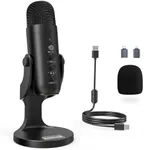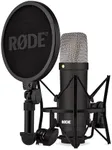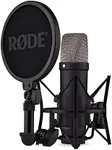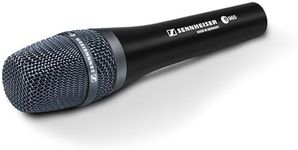Buying Guide for the Best Condenser Microphones
Choosing the right condenser microphone can make a big difference in the quality of your recordings, whether you're making music, podcasts, or voice-overs. Condenser microphones are known for their sensitivity and ability to capture detailed sound, but not all models are the same. To find the best fit for your needs, it's important to understand the key specifications and how they relate to your intended use. Think about where you'll be recording, what you'll be recording, and how much flexibility you need. By focusing on the main features, you can narrow down your options and pick a microphone that will help you achieve the sound you want.Polar PatternThe polar pattern describes how a microphone picks up sound from different directions. The most common patterns are cardioid (front-focused), omnidirectional (all directions), and figure-8 (front and back). Cardioid is great for solo vocals or instruments because it mainly captures sound from the front and reduces background noise. Omnidirectional picks up sound equally from all around, making it good for group recordings or capturing room ambiance. Figure-8 is useful for interviews or duets, as it picks up from the front and back but not the sides. To choose the right one, think about your recording environment and whether you want to isolate your sound source or capture more of the surrounding space.
Frequency ResponseFrequency response tells you the range of sound frequencies a microphone can capture, usually shown as a graph or a range in hertz (Hz). A wider frequency response means the microphone can pick up both very low and very high sounds, which is important for capturing the full detail of vocals or instruments. Some microphones are tailored for specific uses, with a boost in certain frequency ranges to enhance voice clarity or instrument presence. If you're recording vocals, look for a microphone with a smooth and extended frequency response. For instruments, consider whether you need more emphasis on lows, mids, or highs based on what you want to record.
SensitivitySensitivity measures how well a microphone can pick up quiet sounds. Higher sensitivity means the microphone will capture more detail, even at lower volumes, which is great for studio settings or soft vocals. Lower sensitivity is better for loud environments or when you want to avoid picking up background noise. If you plan to record in a quiet, controlled space, a higher sensitivity microphone will give you more detail. If your environment is noisy or you’re recording loud sources, a less sensitive microphone might be a better choice.
Self-NoiseSelf-noise is the amount of noise the microphone itself produces when no sound is being recorded, usually measured in decibels (dB). Lower self-noise is better, especially for quiet recordings like voice-overs or acoustic instruments, because it means your recordings will be cleaner and clearer. If you’re recording in a quiet environment and want to capture subtle details, look for a microphone with low self-noise. For louder sources or less critical applications, self-noise is less of a concern.
Power Requirements (Phantom Power)Most condenser microphones need external power, called phantom power, usually supplied by an audio interface or mixer. This is typically 48 volts. It’s important to make sure your recording equipment can provide phantom power, or the microphone won’t work. If you’re using a computer or portable recorder, check if it supports phantom power. Some microphones can run on batteries, which is useful for field recording or portable setups. Choose based on your recording setup and whether you need flexibility for different locations.
ConnectivityCondenser microphones can connect to your recording device in different ways, most commonly through XLR or USB. XLR connections are standard for professional audio and require an audio interface or mixer, offering better sound quality and more control. USB microphones plug directly into a computer and are easier to set up, making them good for beginners or simple home studios. Decide based on your experience level and the equipment you already have or plan to use.
Size and Build QualityThe size and build quality of a microphone affect how easy it is to use and how long it will last. Larger microphones may offer better sound quality but can be harder to position, while smaller ones are more portable. A sturdy build is important if you plan to move the microphone often or use it in different locations. If you’re setting up a permanent studio, size may not matter as much, but for mobile recording or frequent travel, a compact and durable microphone is a better fit.


















